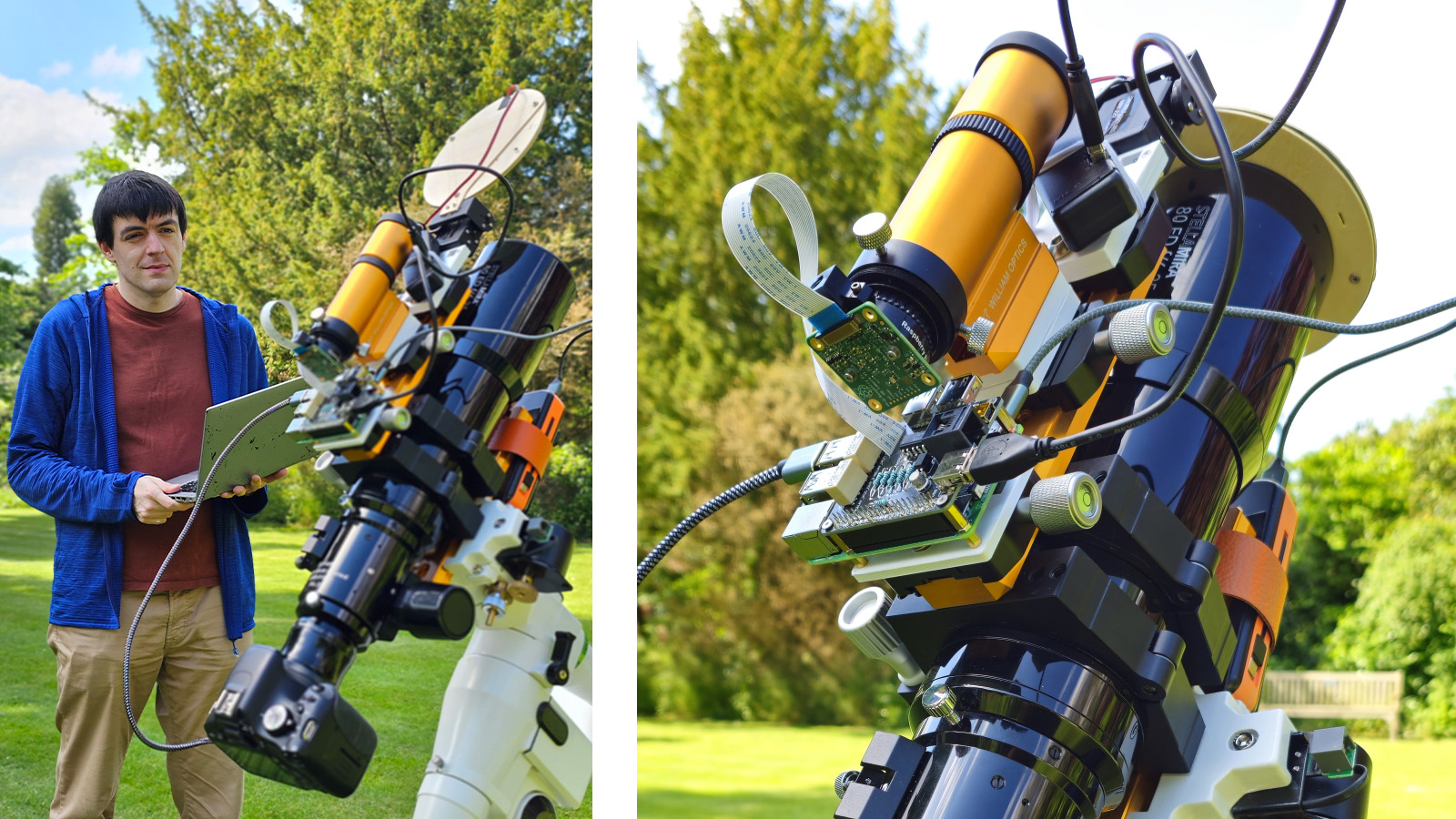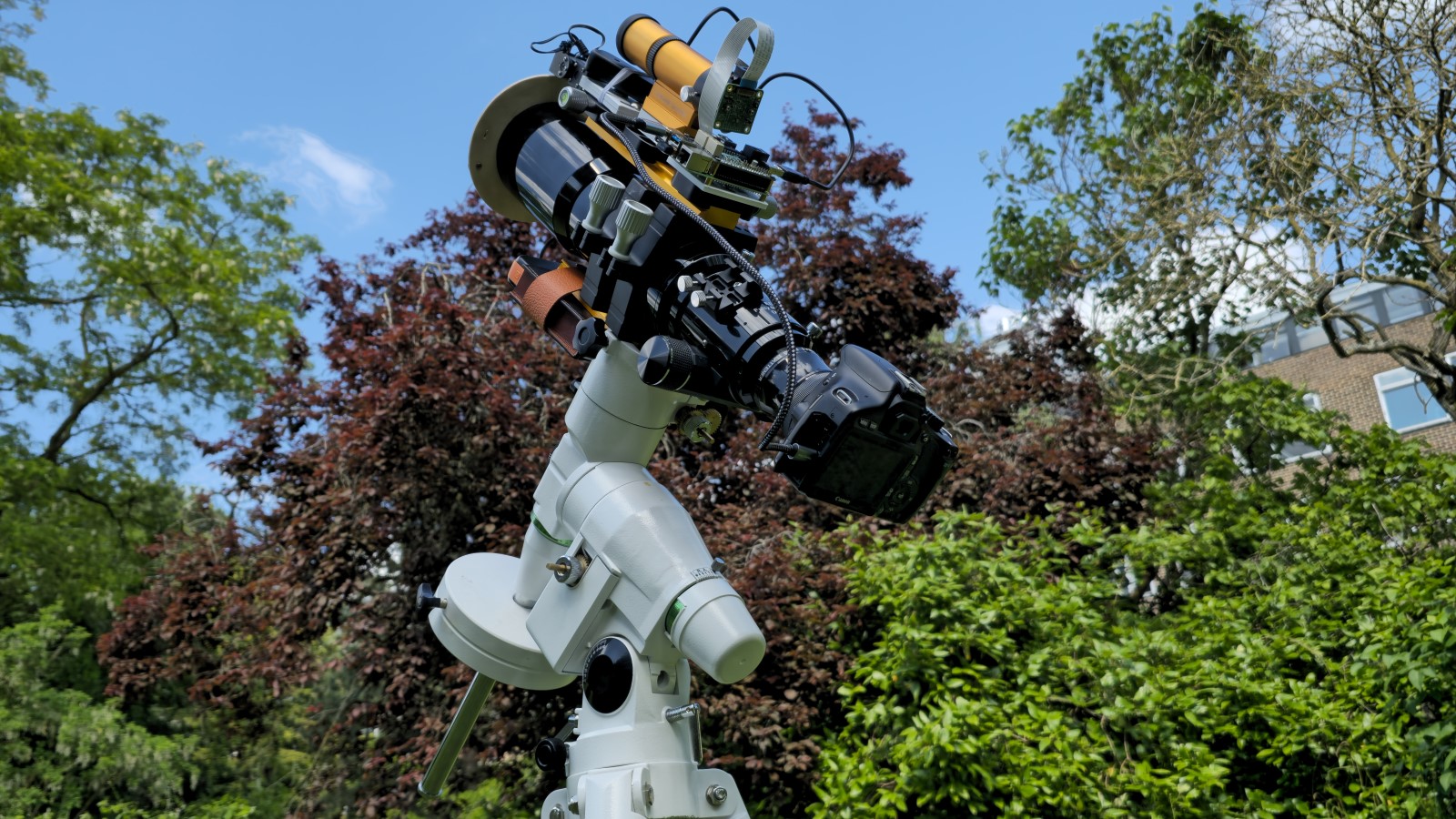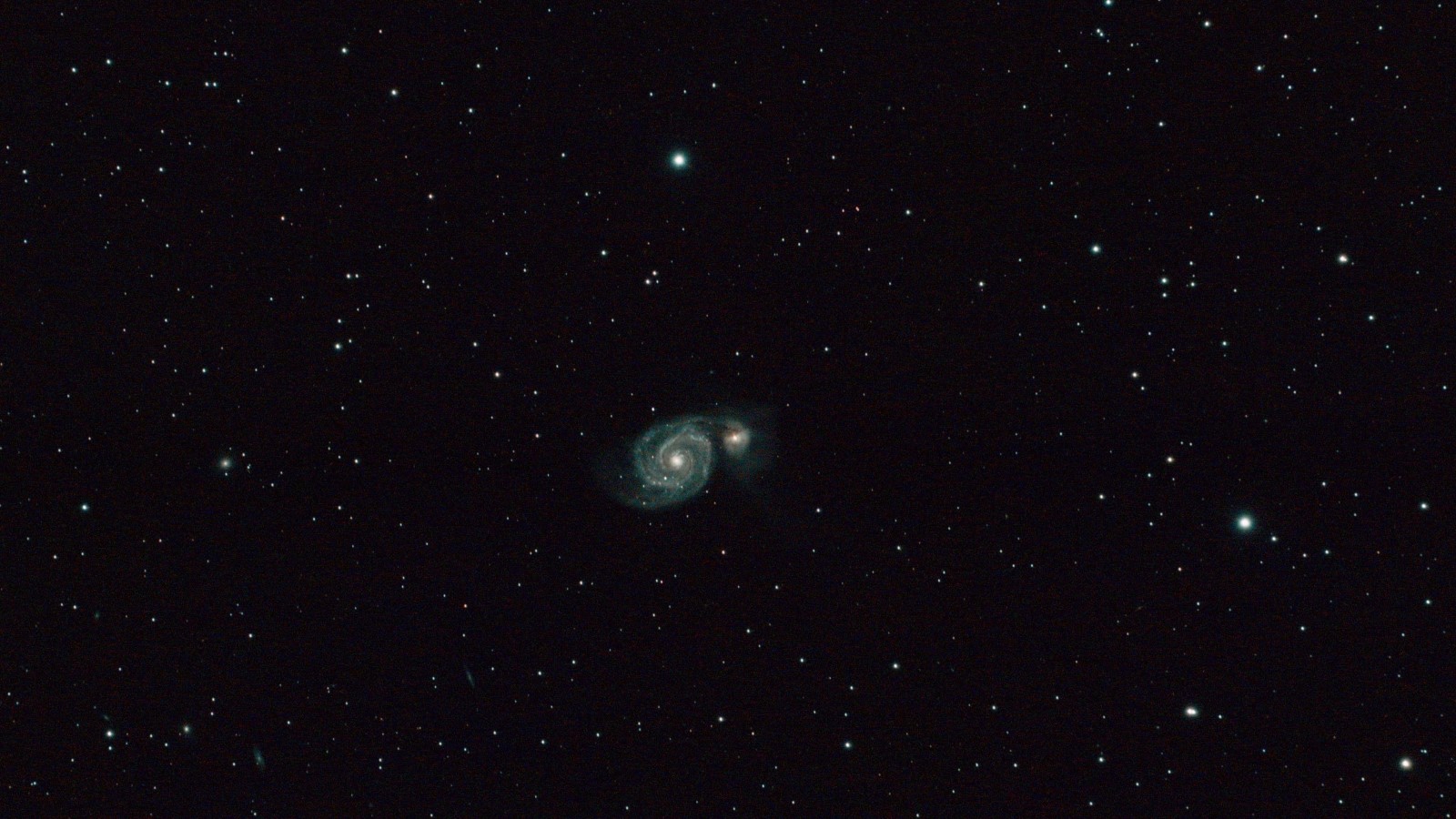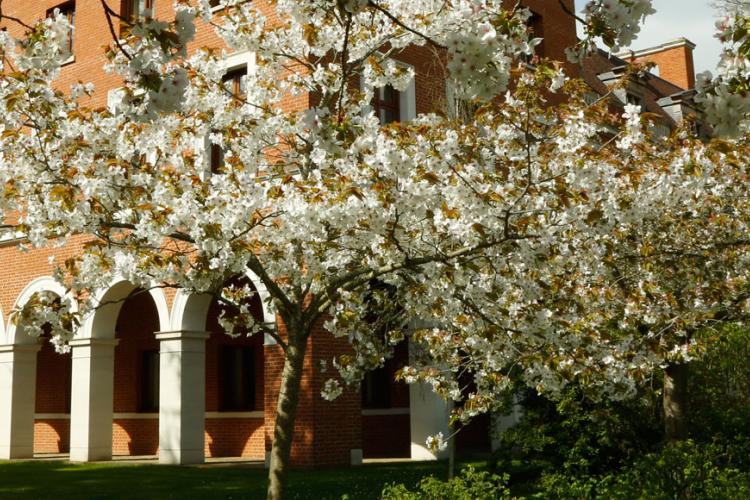Dr Mathias Nowak, Gavin Boyle Fellow in Exoplanetary Science, is an astrophotographer, capturing the stars from the college gardens. He let us into his process, telling the story of his night capturing the Whirlpool galaxy from the fellows’ garden.

26 April 2024
19:00
The clouds disperse, just as the Met Office forecasted. It promises to be a clear night, in the heart of spring ‘Galaxy season’. I’ll be setting up my telescope in the fellows’ garden.
21:10
The mount, carrying my 80mm refracting telescope with an old DSLR camera, is standing in the garden, roughly aligned to the north. A small guidescope with a guide camera are piggybacked on the main telescope, and a single-board computer with a battery complete the set up (pictured below), along with the usual web of cables.
The plan is to use the guide camera to take short exposures and send them to the computer. There, they will be analysed by software to detect any drift of the stars. The mount, properly aligned on the Earth’s rotation axis, should compensate the apparent motion of stars. But if there is any residual drift, the software will adjust the pointing to keep the image perfectly still on the DSLR, which will take long exposures.
Overall, it’s a standard rig for astrophotography, with one notable quirk: the mount I use, an EQ-5, is designed for visual use, not for photography. As such, the motors adjusting the pointing are controlled manually. The computer can’t talk to them, which is unacceptable for what I plan to do. So I added an electronic board, which I designed and built to serve as an interface between the two.
Now I need to fine tune the alignment on the North Pole, a tedious process consisting in measuring the drift of stars in the images, before making small adjustments to a couple of screws on the mount, and repeating as many times as required.

22:30
An hour and a half! That’s how long it took me to achieve what I can only describe as a half-decent alignment. I can manage exposures of between to two to three minutes before before star trails become apparent. Not very good, but I ran out of patience, so I’ll go with it. I suspect the ground was a bit wet, causing the mount to sink while I was making the adjustments, and messing with the measurements.
22:40
I’m looking at the sky to find a suitable target. My options are limited. The Faculty of Economics blocks the eastern horizon, and light pollution gradually takes over towards the south, washing out most stars in that direction. A massive tree obscures the south-west almost up to the zenith. To the west, the Chapel is conspiring with a waning Moon to make observations impossible. I decide on M51, the Whirlpool galaxy. It’s high in the sky, so I should be able to track it for a while before it disappears behind the tree, and it’s not too faint for my 2-minute exposures. I used to have a picture of it on my wall — a famous image taken by the Hubble Space Telescope.
22:50
Finding the target in the sky was easy. It’s between the Big Dipper and the two stars of Canes Venatici. I am now controlling everything remotely from the fellows’ parlour. All I can do is add exposures and various calibrations, and wait. My telescope isn’t the Hubble, and the sky above the fellows’ garden isn’t really comparable to low-Earth orbit, but I’m curious to see what I can get! For now, I only see a smudge in the middle of the images...
27 April 2024
02:40
I’ve lost the target. It seems to be behind a tree. I add another set of calibration frames in the observing queue and return to the fellows’ garden to pack up.
In total, I have 88 two-minute frames of M51, totalling about three hours of photography. However, I am unsure whether these are of any quality. Much like scientific observations, only through proper calibration and processing do the details reveal themselves. The main fight is against the pesky light pollution, which tends to leave an uneven background in the images. It is very difficult to remove, but here it is (pictured below): the Whirlpool galaxy, seen from the fellows’ garden.


The Gavin Boyle Fellowship in Exoplanetary Science held by Dr Nowak was named following a generous gift from Mr Gavin Boyle (SE 1987). Learn more about how Selwyn College recognises philanthropy here.

